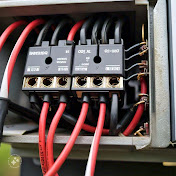Budgerigar
Introduction :-
The budgerigar are also known as budgie. A small, long tailed parrot. They are found in all drier parts of Australia. Its plumage is bright yellow and green, blue cheeks and black marking on the wings. It's a small size bird, approximately 18cm to 20cm from top to end and may have an approximate weight from 30 to 40 grams.
Colours : -
Colour and variety classify budgies into different types, rather than breed. The colour represents the general plumage of the budgie and the variety describes the pattern and colour of marking.
There are two main colour groups :-
- Green / Yellow
- Blue / White
The hereditary wild budgie has a mixture of green and yellow, looks like lemon. The blue/white is equally popular.
From the original wild budgie, more than thirty two primary colour combinations have been registered, enabling hundreds of possible secondary mutations and colour combinations. There might be one or two dark factors that enhances further coloration. They are divided into two series of colours. :-
White-Based Budgies
Sky Blue Budgie : It's the lightest shade due to non presence of any dark factor, minus the yellow, which leaves just sky blue coloration. Sky blue budgie has bright purple patches on cheeks and dark blue feathers on tail.
Mauve Budgie : It's the darkest shade due to presence of two dark factors. Sometimes it looks almost grey. The cheeks apart from grey. The mauve budgie has bright purple cheeks and dark blue feathers on tail.
Grey Budgie : There is zero presence of blue factor and it has almost grey body. However, it has patches on cheeks, no matter whether it is blue, grey or blueish-grey. The feathers of tail are black. It is found in light, medium and dark shades.
Cobalt Budgie : Found in much darker blue colour with presence of single dark factor. Having cheeks purple and dark blue tail.
Violet Budgie : Due to dominant dark factor violet budgie has an enrich primary body shade. Blue and green budgies may have violet gene, but it is found more attractive with blue budgies. However, to observe, too dark shades of violet might possible.
Albino Budgie : Lack of pigment is present in albino budgies, gives them a stark white look all over. However, dark factors are still present but are unable to display.
https://c8.alamy.com/comp/HB0MFX/white-budgerigar-in-the-cage-HB0MFX.jpg
Yellow-Based Budgies :
Light Green Budgie : With an absence of any dark factor, it's the real bright, natural and traditional colour of the budgie. However, facts prove that their gene, in depth, has blue and yellow factors that forms green colour when combined. So, a large variation of colours can be produced by selective breeding. It has grey-blue cheeks and black tail.
Dark Green Budgie : With presence of single dark factor, it's colour is more deep green but less bright. It has violet patches on cheeks and blue tail.
Grey-Green Budgie : With presence of dominant grey factor, it's colour is grey-green in wild light green and it's colour is light grey in sky blue. It's body and mask colour has dull shades of yellow.
Yellow Budgie : Yellow budgie has a complete yellow look and any other colour is not there. Sometimes, bright green marks are shown on undersides.
Lutino Budgie ; The Ino gene is present in green series which is called Lutino gene and the Ino gene is present in blue series is called Albino (white). Except white, all colours are abolished in Ino gene, so that lutino budgie is of more bright yellow colour. It's cheeks has white or silver patches.
https://media.istockphoto.com/id/836938460/photo/budgie-parakeets-parrots-lutino.jpg?s=612x612&w=0&k=20&c=CFLrPpe_yc0psxbpjB8M8Zf09TjB4IuuP1kNThk9PiE=
How to determine male or female budgie
It's sometimes, quite confusing to determine the gender among budgies. You have to observe the cere (an area surrounding nostrils) of baby budgies. It is pinkish in male or tan in female. As they become mature, the male turns it's cere into blue from pink, while it turns brown into female from white or tan.
Another sign you can witness, mature male budgies have blue feet and female budgies have pink or tan feet.






















